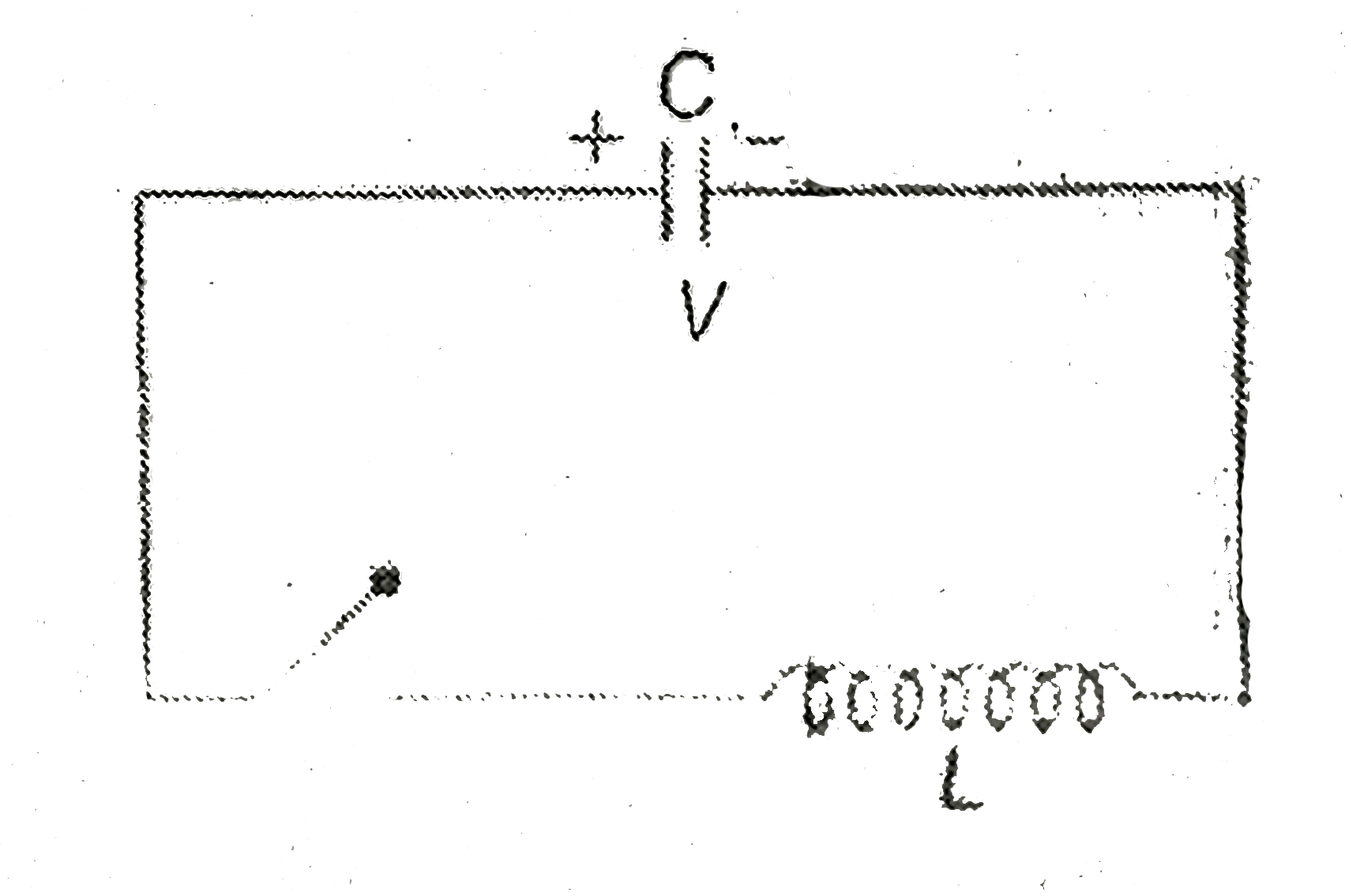A capacitor of capacity 20microF is charged upto 500V and and disconnected from cell. Now this charged capacitor is connected to another capacitor of capacitance C If final common potential is 20V then find the capacitance C.
To solve the problem, we will follow these steps:
Step 1: Calculate the initial charge on the first capacitor
The charge Q1 on the first capacitor can be calculated using the formula:
Q1=C1×V1
where:
- C1=20μF=20×10−6F
- V1=500V
Substituting the values:
Q1=20×10−6×500=10×10−3C=0.01C
Step 2: Set up the equation for the final voltage
When the charged capacitor is connected to another capacitor C, the total charge is conserved. The final voltage Vf across both capacitors is given as 20V. The total charge Qnet can be expressed as:
Qnet=Q1=C1×V1=Ctotal×Vf
where:
- Ctotal=C1+C
Thus, we can write:
Q1=(C1+C)×Vf
Step 3: Substitute known values into the equation
Substituting the known values into the equation:
0.01=(20×10−6+C)×20
Step 4: Simplify and solve for C
Now, we simplify the equation:
0.01=(20×10−6+C)×20
Dividing both sides by 20:
0.0005=20×10−6+C
Rearranging gives:
C=0.0005−20×10−6
Calculating 20×10−6:
20×10−6=0.00002
So,
C=0.0005−0.00002=0.00048C
Step 5: Convert C to microfarads
To express C in microfarads:
C=0.00048C=480μF
Final Answer
The capacitance C is:
480μF
---
The charge Q1 on the first capacitor can be calculated using the formula:
Q1=C1×V1
where:
- C1=20μF=20×10−6F
- V1=500V
Q1=20×10−6×500=10×10−3C=0.01C
When the charged capacitor is connected to another capacitor C, the total charge is conserved. The final voltage Vf across both capacitors is given as 20V. The total charge Qnet can be expressed as:
Qnet=Q1=C1×V1=Ctotal×Vf
where:
- Ctotal=C1+C
Q1=(C1+C)×Vf
Substituting the known values into the equation:
0.01=(20×10−6+C)×20
Now, we simplify the equation:
0.01=(20×10−6+C)×20
Dividing both sides by 20:
0.0005=20×10−6+C
Rearranging gives:
C=0.0005−20×10−6
Calculating 20×10−6:
20×10−6=0.00002
So,
C=0.0005−0.00002=0.00048C
To express C in microfarads:
C=0.00048C=480μF
The capacitance C is:
480μF
Topper's Solved these Questions
Similar Questions
A capacitor of capacity 2μF is charged to 100V. What is the heat generated when this capacitor is connected in parallel to an another capacitor of same capacity?
View SolutionA capacitor of capacitnace C is charged to a potential difference V and then disconnected from the battery. Now it is connected to an inductor of inductance L at t=0. Then

View SolutionA capacitor of capacitance C is charged to a potential differece V0. The terminals of the charged capacitor are then connected to those of an uncharged capacitor of capacitance C/2.
a. Compute the original charge of the system.
b. Find the final potential differce across each capacitor.
c. Find the final energy of the system.
d. Calculate the decrease in energy when the capacitors are connected.
e. Where did the ''lost'' energy go?
View SolutionA capacitor of capacitance C is charged to a potential difference V0. The charged battery is disconnected and the capacitor is connected to a capacitor of unknown capacitance Cx. The potential difference across the combination is V. The value of Cx should be
View SolutionA capacitor of capacitance C0 is charged to potential V0. Now it is connected to another uncharged capacitor of capacitance C02. Calculate the heat loss in this process.
View SolutionA parallel plate capacitor of capacitance C has been charged, so that the potential difference between its plates is V. Now, the plates of this capacitor are connected to another uncharged capacitor of capacitance 2C. Find the common potential acquired by the system and loss of energy.
View SolutionA capacitor of capacitance 5μF is charged to potential 20V and isolated. Now, an uncharged capacitor is connected in parallel to it. If the charge distributes equally on these capacitors, find total energy stored in capacitors.
View SolutionA capacitor of capacitance C carrying charge Q is connected to a source of emf E. Finally, the charge on capacitor would be
View SolutionA capacitor of capacitance C charged by battery at V volt and then disconnected. At t = 0, it is connected to an uncharged capacitor of capacitance 2C through a resistance R. The charge on the second capacitor as a function of time is given by q=αCV3(1−e−3tβRC) then fing the value of αβ.
View SolutionA capacitor of 20μF charged upto 500 V is connected in parallel with another capacitor of 10μF, which is charged upto 200 V. the common potential is
View Solution
